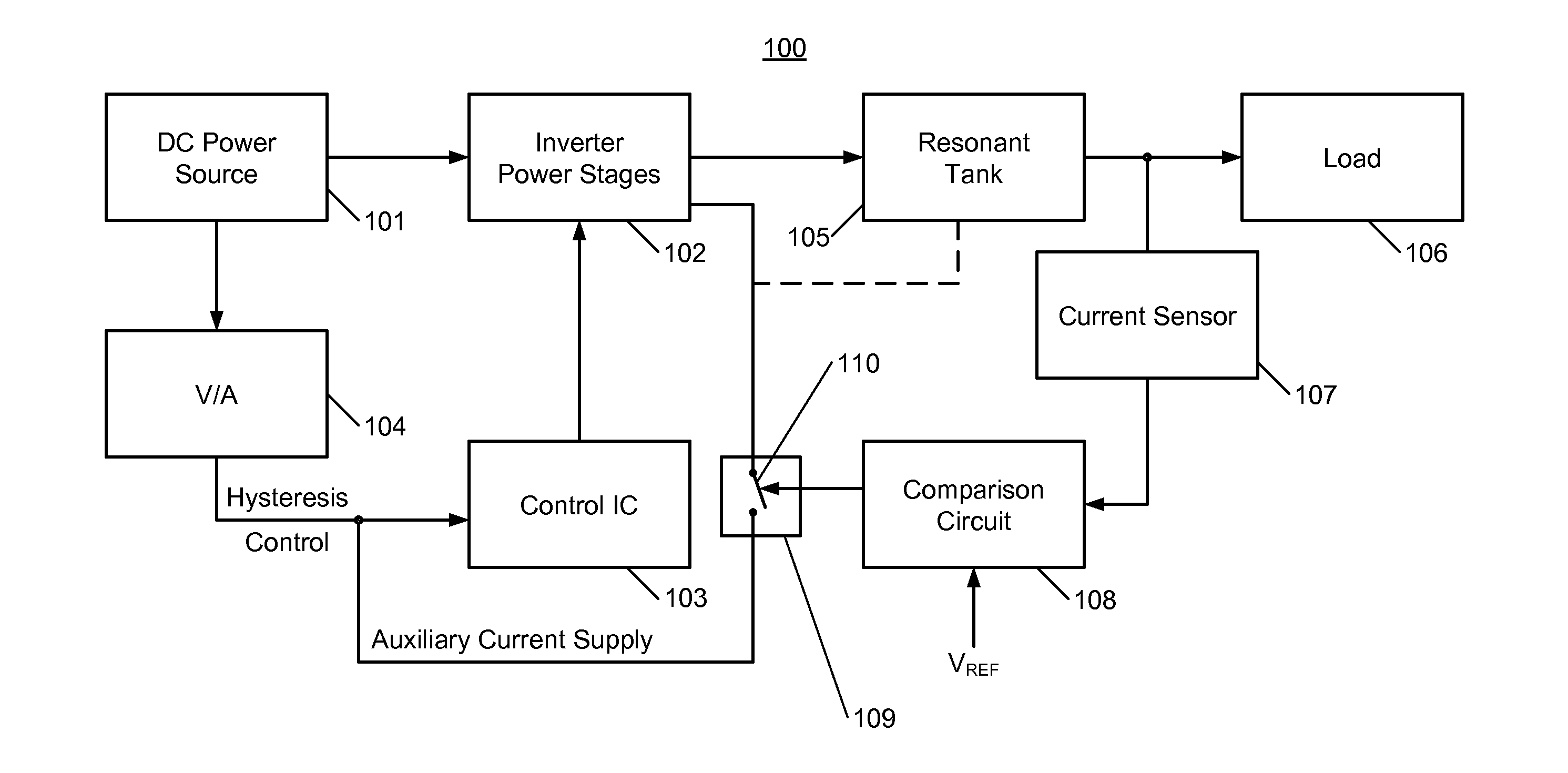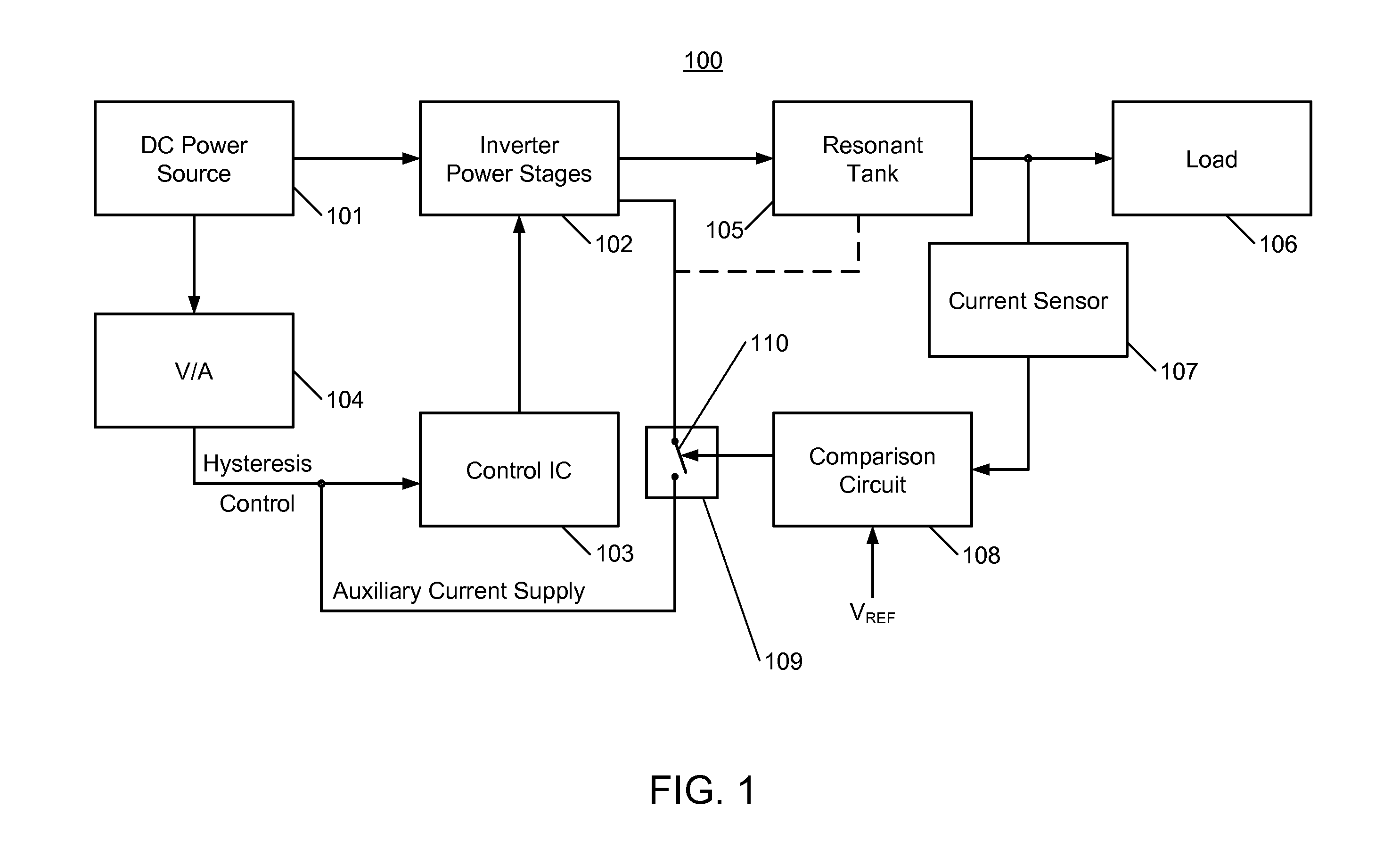Resonant Inverter With Sleep Circuit
a technology of inverter and circuit, applied in the field of power supplies, can solve the problems of increasing the initial monetary cost of electronic ballast, increasing the cost of increasing the cost manifest, etc., and achieves the effect of increasing the initial monetary cost of electronic ballast, increasing maintenance costs, and increasing costs for electronics including sleep mode circuits
- Summary
- Abstract
- Description
- Claims
- Application Information
AI Technical Summary
Benefits of technology
Problems solved by technology
Method used
Image
Examples
Embodiment Construction
[0018]FIG. 1 shows a block diagram of a resonant inverter 100 including a control IC 103. In some embodiments, the control IC 103 may be referred to herein as a sleep circuit. Alternatively, or additionally, in some embodiments, the sleep circuit may include the control IC 103. A DC power source 1010 powers the resonant inverter 100. In some embodiments, the DC power source 101 may include an AC to DC converter, which is not shown in FIG. 1. In addition to the control IC 103, the resonant inverter 100 includes inverter power stages 102, such as but not limited to a half bridge configured with two FETs (not shown in FIG. 1) that the control IC 103 drives. Current consumption of the control IC 103 in under voltage lockout (UVLO) conditions is considered to be very low, such as but not limited to about 0.2-0.3 mA. The control IC 103 is coupled to the DC power source 101 via a voltage to current converter 104. A storage capacitor, not shown in FIG. 1, is connected between a Vcc pin and ...
PUM
 Login to View More
Login to View More Abstract
Description
Claims
Application Information
 Login to View More
Login to View More - R&D
- Intellectual Property
- Life Sciences
- Materials
- Tech Scout
- Unparalleled Data Quality
- Higher Quality Content
- 60% Fewer Hallucinations
Browse by: Latest US Patents, China's latest patents, Technical Efficacy Thesaurus, Application Domain, Technology Topic, Popular Technical Reports.
© 2025 PatSnap. All rights reserved.Legal|Privacy policy|Modern Slavery Act Transparency Statement|Sitemap|About US| Contact US: help@patsnap.com



